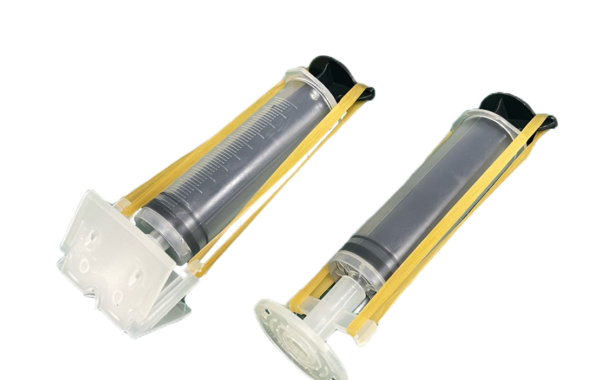Hydrophobic & Hydrophilic PU Injection Agents: What’s the Difference?

Introduction
Polyurethane injection or PU Injection agents are essential for sealing cracks, preventing water leakage, and foundation repair in construction and repair projects. These agents come in two distinct types: hydrophobic and hydrophilic. While they might sound similar, their reaction with water and moisture significantly differentiates them. This guide provides an insightful comparison to help you choose the right PU injection agent tailored to your project and construction needs.
Hydrophobic PU
Let’s break it down: “Hydro” means water, and “phobic” means fear. Combining them becomes hydrophobic, fear of water—essentially water-repelling. Hydrophobic PU injection works by repelling water, forming a moisture-resistant barrier. When injected into cracks, it interacts with minimal water present in the cracks or even just air humidity, creating a rigid structure that remains semi-elastic, absorbing little to no water during reaction.
Hydrophobic PU reacts with minimal water presence or air moisture. This initiates polymerization, causing significant expansion—some composition can expand up to 20 to 40 times their original volume. This impressive expansion capability allows hydrophobic PU to seal cracks using a small amount of material. The reaction kicks off rapidly, starting within 10 seconds, and completes hardening in about 30 seconds.
Available in both single-component and two-component versions, hydrophobic PU offers flexibility in application. Single-component agents are ready to use immediately, while two-component agents need mixing of components A and B in a specific ratio to achieve desired results.

Key Characteristics of Hydrophobic PU:
- Water Repelling: Designed to repel water and remain moisture-resistant.
- High Expansion: Can expand dramatically, up to 20–40 times its initial volume.
- Rapid Reaction Time: Starts reacting within 10 seconds and hardens fully in 30 seconds.
- Resulting Structure: Creates a rigid yet semi-elastic barrier.
- Application Flexibility: Comes in single-component and two-component forms for diverse needs.
Our Products
Single Component Injection Agents
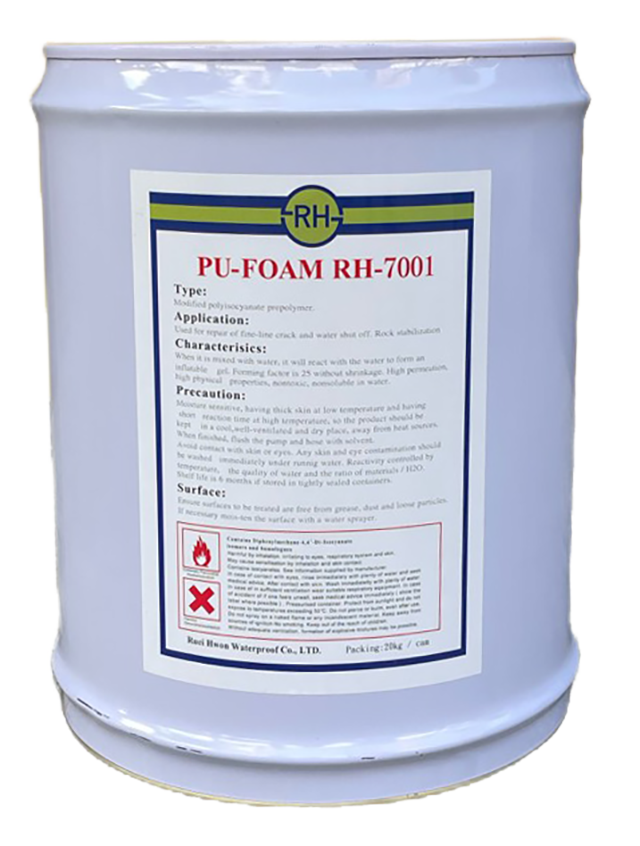
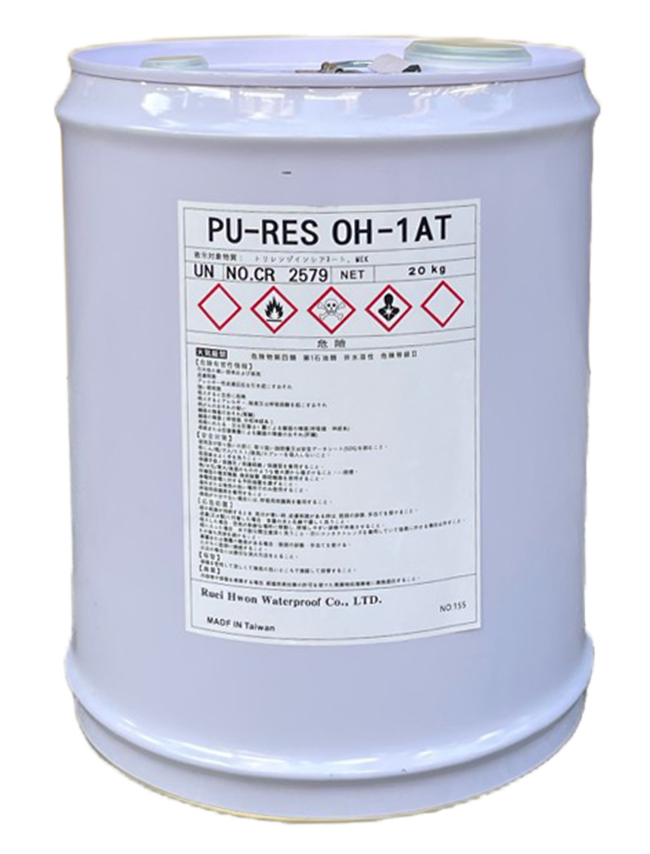
Two-Component Injection Agents

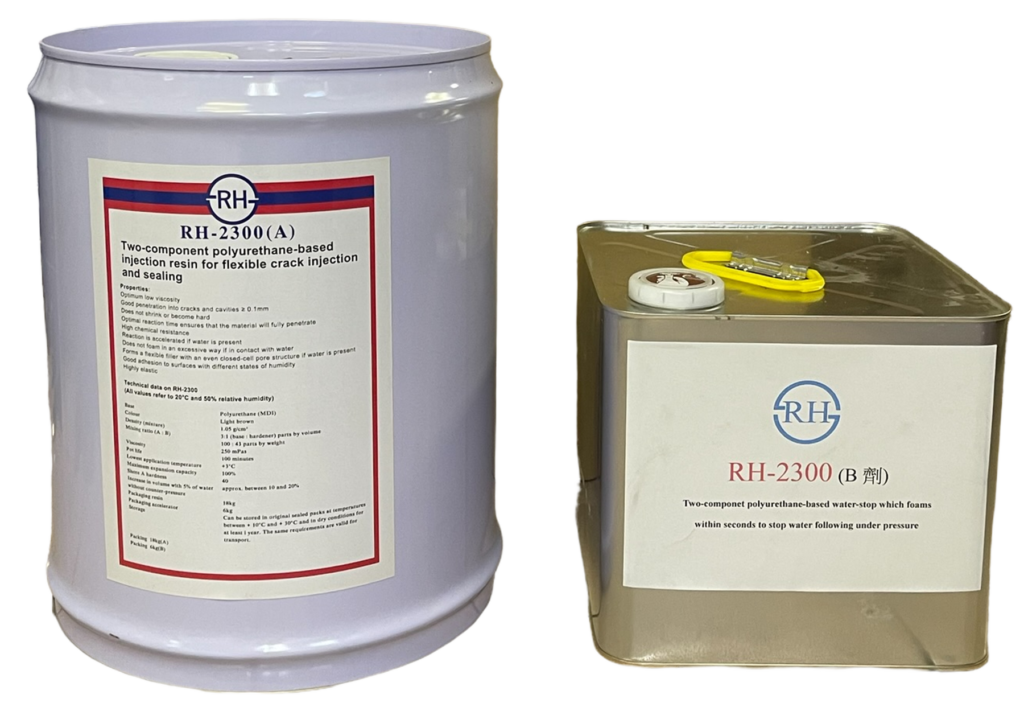
Hydrophillic PU
On the other hand, “hydro” still means water, but “philic” implies a love for it. Hydrophilic PU injection is all about absorbing water, making it ideal for environments with a lot of moisture. When injected, it reacts with the water in the cracks, forming a sponge-like, elastic structure. This type of PU thrives when there’s plenty of water around, using that moisture to create an excellent adhesive bond with surfaces like concrete, penetrating deep into cracks and crevices.
Hydrophilic PU may not expand as much as its hydrophobic counterpart, but it more than makes up for it by absorbing up to 20 times its own volume in water. This makes it highly effective for applications requiring flexibility and moisture absorption. The reaction time is a bit slower, with the initial reaction starting around 20 seconds and complete hardening taking between 3 to 5 minutes.
Hydrophilic PU is highly effective for sealing gushing water leaks or foundation repair and, this makes it the ideal choice for high-moisture environments where water is a persistent issue.

Key Characteristics of Hydrophilic PU:
- Water Absorbing: Draws in moisture, which helps in bonding and penetration.
- Moderate Expansion: Expands 3–5 times its initial volume.
- Slower Reaction Time: Starts reacting in 20–30 seconds, with full hardening in 3–5 minutes.
- Resulting Structure: Forms a sponge-like, flexible, and elastic barrier.
- Superior Adhesion: Excellent for bonding with concrete and other materials when water is present.
Our Products
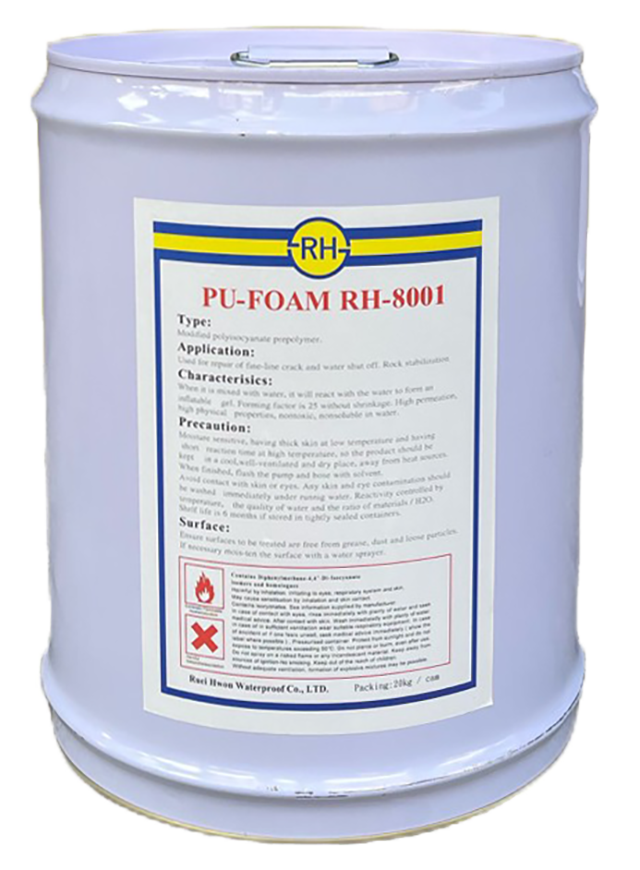
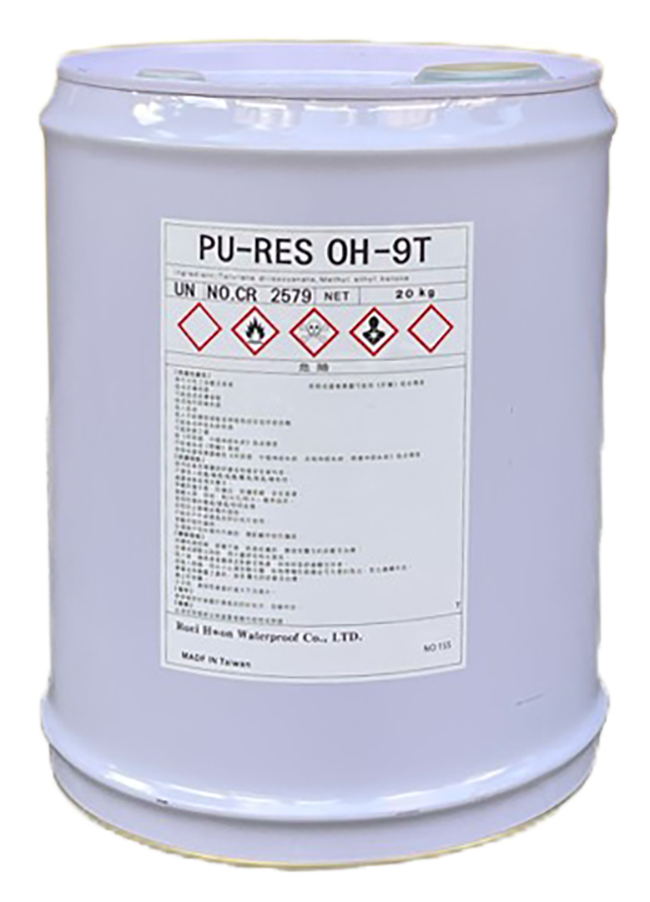
Comparsion Summary
| Product | Hydrophobic PU Injection | Hydrophilic PU Injection |
|---|---|---|
| Appearance Before Reaction | Transparent-Yellow Liquid | Transparent-Yellow Liquid |
| Appearance After Reaction | Rigid | Sponge-like |
| Texture | Semi-elastic | Elastic, Flexible |
| Reaction Criteria | Little water or air moisture required | Water presence is favorable |
| Expansion Ratio | 20 – 30 times the initial volume | 3 – 5 times the initial volume |
| Water Absorption Ratio | Very minimal | Up to 20 times |
| Initial Reaction Time | 10 – 15 seconds | 20 – 30 seconds |
| Complete Hardening Time | 20 – 30 seconds | 3 – 5 minutes |
| Adhesive to Surface | Good | Excellent |


